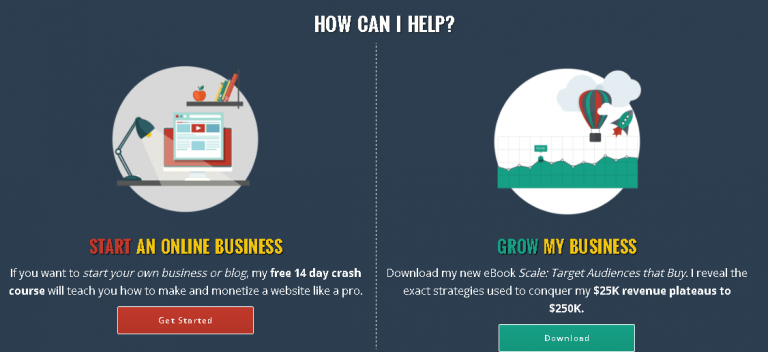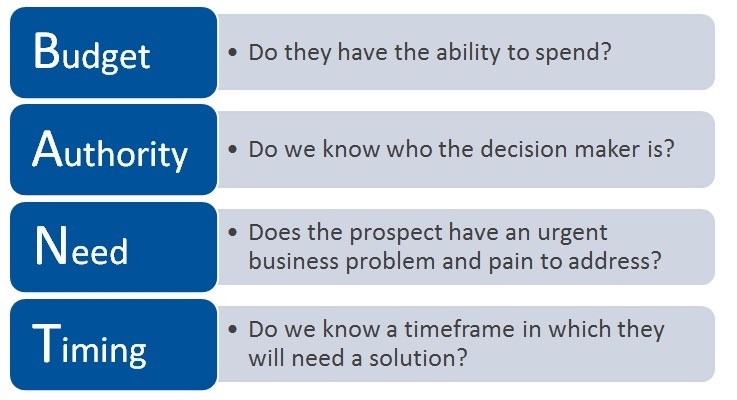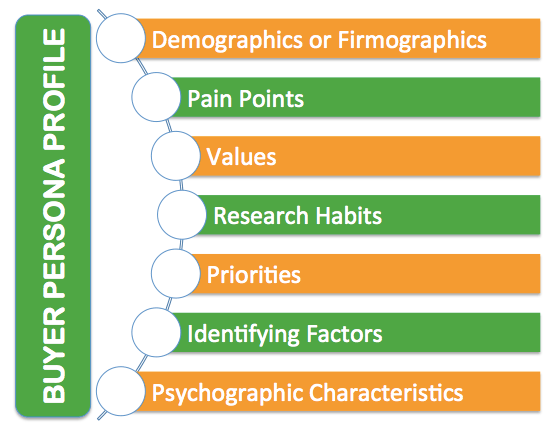It’s easy to get caught up in tactic hunting. You look for new flashy trends and marketing tactics that promise riches.
The truth is that real success with your business comes from focusing on the rather boring basics.
And few topics are less “hip” and “cool” than lead qualification.
In fact, this topic is about as sexy as a beige-colored sedan.

But nothing will have a greater effect on your team’s ability to effectively market and sell your products than your process for qualifying potential and existing leads.
In this article, I am going to detail the exact processes and qualification formulas that you need to follow in order to quickly and effectively find leads who are willing and eager to invest in your services.
If you follow the steps I am going to lay out in this article, you will be able to save yourself thousands of dollars, streamline your marketing and sales processes, and avoid countless hours of headaches.
So let’s get down to it.
What is Lead Qualification and Why is it Important
Lead qualification is a systematic process to evaluate whether prospects are able, ready, and willing to buy your products and services.
It involves determining whether a prospect has a need for your product, the authority to make the purchase, and the money to execute a transaction.
So why do you need to qualify a lead in the first place?
Why not just throw every email address you have in an autoresponder?
A lead is a lead right?
Wrong.
Nothing will cause more internal conflict between your sales and marketing team than the quality of the leads produced by your company.
Especially in a B2B company.
Heck, even if you’re a solopreneur, failing to qualify leads will be the fastest way to burn your email list.

Picture this for a second.
Imagine that your marketing team is operating under a set of ambiguous and vague lead qualification SOPs.
And while they are able to generate vast quantities of leads, the quality of the leads are a mystery.
Each and every day you have dozens if not hundreds of new leads being sent to your sales team for follow up and conversion.
But only a small percentage of these leads can actually be sold to.
No matter how impeccable your sales team’s tactics are or how smooth their pitch is, they simply cannot sell anything to the majority of these leads.
So your sales team works diligently, calling and corresponding with hundreds of unqualified leads, wasting their precious time and your precious money.
As this process continues to repeat itself, the sales team’s motivation wanes and it takes all of their willpower to show up to work.
And let’s be honest.
The reason why we hate cheesy stock photos of happy teams that look like this…

is because the reality of a team without a solid lead qualification process will look like this:

Alright. Enough with the stock photos.
The sales team will blame the marketing team’s efforts and conflict will become inevitable.
You are now faced with:
- a disgruntled sales team
- a confused marketing team
- a dwindling budget
- no real revenue to show for all of your efforts
Why?
Because you and your teams did not take the time to clearly define the parameters for lead qualification.
But you might be thinking.
“Ok Sam, I get that having qualified leads is a good thing, but won’t this process shrink my pipeline and cause me to lose out on other potential leads?”
Yes, it will.
Having a strict qualification process will result in the loss of a few potential customers in that moment.
But it’s ok.
There are two reasons why.
Reason #1: sales efficiency
Your goal as a business professional should always be to increase the effectiveness of every cog in your business machine.
While having a huge pipeline of both qualified and unqualified leads can result in more sales, it will result in less revenue and decreased efficiency.
Take my friend Barry for example.
With a list size of just under 10,000 people, he only sent emails to 11 highly-qualified leads. He converted 7 of them (64%) into $7,500 coaching clients.
When you focus all of your efforts on highly qualified leads, you will be able to increase your conversion rate and ensure that you are only working with high-level customers who want and appreciate your services.
Reason #2: timing is everything
Just because they show a mild interest in your products or services, it does not mean that they are interested in buying today.
With a well-defined checklist of events and behavioral metrics, you can isolate your warm and hot leads, while nurturing cold leads to move closer towards your goal.
Don’t believe in lead nurturing?
The numbers will prove you wrong.
- Forrester Research shows that companies that are successful at lead nurturing generate 50% more sales leads at 33% lower cost (Source: Forrester Research).
- Leads that have been nurtured make purchases that are 47% larger than those who have not been nurtured (Source: ANNUITAS).
- 79% of marketing leads do not, and will never convert into sales (Source: Marketing Sherpa).
- 73% of all B2B Leads are not sales-ready (Source: Marketing Sherpa).
- Businesses that use marketing automation to nurture prospects have seen a 451% increase in qualified leads (Source: ANNUITAS).
By sending all of your new leads to your sales funnel without a qualification process, you’re asking for list armageddon.
The Three Levels of the Lead Qualification Process
On your path to lead qualification, there are three levels that all leads must be funneled through to be considered “sales ready” leads.

1. Marketing Qualified Leads (MQL)
A marketing qualified lead or MQL is exactly what it sounds like.
They are a lead that your marketing team has analyzed and whom they have deemed fit for targeting as a potential customer.
The marketing team will create various free offers in the form of content, downloadables, and free trials to determine a lead’s interest before funneling them through the rest of the process.
One example of a marketing qualified lead is a lead that has opted into a lead magnet or online offer.
So for example, on this website, I offer two different lead magnets.

As soon as an audience member opts in to receive one of these offers, they have officially become a marketing qualified lead.
I will now know that I can invest more resources into determining products for which they would be viable buyers and move them into the sales acceptance stage.
2. Sales Accepted Lead (SAL)
A sales accepted lead or SAL is a lead that has already been qualified by the marketing team and then passed along for further scrutiny and evaluation.
So for example, let’s say that you run a Facebook advertising agency and offer a free website audit to potential leads.

Once they have taken advantage of that offer, they are now marketing qualified and entered into the second stage of the qualification funnel – to be sales accepted.
From here, the sales team will correspond with them further, asking more in-depth questions to determine their “sellability” either prior to or after delivering the website audit.
Depending on the lead’s qualifications and interest levels the lead will either be remarketed, discarded, or moved onto the third level of qualification, Sales Qualification.
3. Sales Qualified Lead (SQL)
An SQL has passed the first two phases of your lead qualification funnel and been deemed qualified to be sold.
The sales team will now conduct a BANT analysis before engaging in the final sales call and (hopefully) closing the deal.
BANT is a sales acronym to help marketers determine who is qualified and who is not.
It stands for:

Once all of the above qualifications have been met, the lead is sales qualified and ready to engage with your sales representatives for final conversion.
An Example of Lead Qualification at Work
Let’s go back to our previous example of a Facebook Advertising agency.
Step #1: Your marketing team puts together a marketing qualification funnel where they target small businesses who have shown interest in Facebook advertising services.
Their ads target these potential leads with a free offer for your social media audit.
After the campaign concludes, the marketing team has generated roughly 1,000 marketing qualified leads.
Step #2: They now pass these MQLs onto the sales team for further qualification.
Before auditing the lead’s websites, the sales team sends out questionnaires to collect more information.
They ask about:
- yearly revenue.
- current marketing and advertising practices.
- if they have ever worked with an agency before.
- any other pertinent details they need to qualify them.
Of the 1,000 MQLS, only 100 pass the SAL process and are passed onto the final stage of the sales qualification process.
Step #3: Now, with the final 100 SALs filtered through, the sales division now qualifies these leads even further, following up with the highly qualified leads over the phone to discuss the audit.
They go over the details, of the audit all the while collecting information on the lead and filtering them through the BANT process.
After the process they find that roughly 10 of the leads are fully sales qualified and are then connected with a representative, resulting in 5 highly qualified new customers.
The leads have been filtered, your sales and marketing divisions have done their jobs admirably and you have an extra $5,000 in monthly revenue added to the bottom line.
The Qualification Frameworks you Need to Know
While we already discussed the qualification framework of BANT, there are a few more frameworks that you can tailor to your specific company and product.
Every company and every sale is different.
But with the following three qualifications, you will be equipped to handle any challenges you might face in qualifying existing leads.
GPCTBA/C&I
Ok…
So I know that this acronym might feel longer than a Presidential Inauguration speech, but it’s valuable nonetheless.

Let’s go through the different criteria in GPCTBA.
Goals
This qualifying factor helps you determine what your client’s goals are for the foreseeable future and how you and your business can help them achieve those goals.
Ask questions like:
- What are your quarterly, yearly, and 5-year goals?
- What is your top priority for the year?
- What one goal, if achieved, would 10X the results that your company is currently achieving?
Plans
Now that you know the goals your lead is pursuing, it’s time to dive into how they plan to achieve their goals.
This is a part of the discussion where you can demonstrate your expertise within your industry and provide free value in a consultation.
- What is your current plan to achieve your goals?
- What past plans have you executed to achieve similar goals? What were the results?
- Do you have the required resources to successfully implement this plan?
- What are the roadblocks you see arising as you execute this plan?
With a few simple recommendations, you can quickly position yourself as an authority figure who can help them with their goals and increase the odds of closing the sale.
Challenges
This is where the money is made.
You and your company are paid in direct proportion to the quality of the challenges or problems that you can help your customers overcome.
If you can find the pain point that your lead is facing and you can put pressure on it, and reiterate it until they realize how severely they need help, you will make a sale.
But first, you have to qualify your lead and make sure that they are actually facing a challenge that you and your team can help them with.
Ask questions like the following to determine what challenges they are facing and if/how you can help.
- What makes you believe that you can handle this challenge on your own even though your previous efforts to surmount it were ineffective?
- Do you believe that your company has the knowledge and skill sets to overcome this challenge on its own.
- What is your “pivot” plan if you realize your current method for overcoming this challenge is not working.
Timeline
The only asset in the universe that is absolutely fair and irreplaceable is time.
We are all given exactly 24 hours in a day and exactly 365 days in a year, period.
This makes it essential that you are not wasting your time on leads whose timeline does not match your own.
You can keep them on the backburner, but if a potential client does not want to implement your plan and your company’s services immediately or in the near future, then you need to move them down your priority list.
- When do you plan to get started?
- Does your company have the resources to implement your plan now?
Budget
There are a number of different ways that you can address your leads financial qualifications with much more tact and than simply asking “What is your current budget”
Ask questions like:
- Do you see the value/potential ROI of the services that we are providing?
- Do we agree on the value of this agreement?
- Are you currently spending money on other services or products to solve this same pain point?
Authority
According to Hubspot’s article on sales qualification, within this framework, it is not necessary that the person you are speaking to has the authority to make a sale.
As long as they have influence and the ear of the decision maker, you have a green light.
- Do you think that the decision maker values this product/service?
- What objections do you think the decision maker will raise?
- Do you believe that the decision maker understands the potential value of our agreement? If not, what can we do to convince them of our services?
Negative Consequence and Positive Implication
The final step is also the most important.
Diving into the negative consequences and positive implications behind the results that your product or service promises should evoke a strong emotional response from your potential buyer.
You basically want to get them to dive into their imagination and visualize their life 6-12 months from now once you have delivered upon your promises.
Ask them questions like:
- If we could deliver the results that we promised, how would your life and business change?
- If you continue down the path you are on and are unable to achieve your goals without outside aid, how will this impact your business/family/personal life?
- Once you overcome this challenge, what will be your next steps?
This sales qualification is highly specialized and typically works best whenever you are pitching high ticket items with a price tag that normally makes leads go pale.
You are able to gather huge amounts of information and truly delve into the why behind their goals and how you can help them, ultimately making the actual sale much easier.
Faint
Funds Authority Needs and Timing
While BANT is focused on a company’s budget for a particular product, the FAINT process understands that many purchases often exceed an organization’s or individual’s budget.
But they do not exceed their financial capacity.
An example of this is a young friend of mine who recently told me about a purchase that he made to join a high-level mastermind and training program.
The total of the purchase was roughly $300.
Now, he is currently making about $2,500 after taxes, meaning that this purchase was far outside of his budget for personal growth and development.
However, because of the value of the offer and his perceived need for the training, he was willing to exceed his budget because he had the financial capacity to absorb the decision.
With many companies, they will not be able to “budget” for your services, but they have such a burning need for your product and service that they are willing to leverage other assets in order to make a purchase.
This is where the FAINT process becomes invaluable to your company.
CHAMP
The CHAMP process, or Challenges, Authority, Money and Prioritization is a process that focuses on the challenges that a company is facing.
Remember how I said earlier that your company’s potential revenue is in direct proportion to the problems that you are able to solve for your customers?
Well, this is where this process comes into play.
Most of your clients have more disposable income and revenue than they think.
And if the challenge they are facing is big enough and the solution that you are offering provides enough value, they will almost always be able to find the money to invest in your services.
This process is great for high-level coaching and consulting packages and similar products.
5 Qualification Red Flags to Watch Out For
So now that you know the processes and qualification acronyms to follow, what are some of the red flags you need to watch out for during this process?
1. Location, Location, Location

Depending on your product or service, leads might be outside of your company’s “jurisdiction”.
For example, if your offer requires that you or your team does hands-on work at the company’s headquarters and the lead you are nurturing is 50+ miles away, you should probably cut your losses.
2. Inconsistency
If you have a lead whose answers and responses are constantly in contradiction, then odds are that they either are not thoughtful enough to provide congruent information or they lack the requisite knowledge to provide consistent answers.
Either way, this is an indicator that your lead is unfit for further investment.
3. Curt Discussions
Does your lead constantly provide you with short responses to burning questions that you are asking?
Are they providing you with one-word answers to in-depth questions?

Then they probably do not truly understand the value of your offer or they simply do not need what you are offering.
Think about it.
If you suffered from a debilitating illness and someone came to your doorstep with a proven cure for your disease, how would you respond?
Would you be quick and curt in your answers or would you want to talk with them?
If you truly needed what they had to offer, you would carve the time out of your schedule to have in-depth conversations no matter how busy you were.
Leads with a tendency to cut you off during discussions or provide you with simple answers to questions almost always need to be deprioritized.
4. Lack of Engagement with Your Content
If you look into your CRM and notice that a lead is not engaging with your content on a sufficient level, then they probably lack the desire for your product or service.
If they are not opening your emails, viewing and commenting on blog posts, or following you on social media, they are probably not going to buy from you.
5. False Information
Did their contact sheet look like this?
Phone: 000-000-0000
Email: noneofyourbusiness@dontcare.com
Address: 1111 Not Interested Lane
If so, then you should probably save yourself and your sales team a whole lot of headache and just forget about them.
Pardot’s 5 Step Process for Qualifying a Lead in Under a Minute
While researching this article, I came across an excellent piece of work from the company Pardot with a 5 step process for qualifying a lead in under a minute.
These 5 steps are simple and powerful and will allow you to quickly qualify leads with minimal headaches.
1. Know Your Buyer Profile
Before you even begin the lead generation process, let alone the qualification process, you need to have an ideal buyer profile.
What constitutes an ideal buyer? Who do you want to be working with?

How much revenue do they generate?
What challenges are they facing?
What industry are they in?
Are you selling to a manager? An executive? A company owner?
Develop a highly detailed buyer profile with your sales and marketing team before you set out to generate and qualify leads and you will save yourself countless hours.
2. Understand How Intent and Interest Differ
If you have set up your CRM properly (more on that later) you will be able to review lead’s activities and determine with which leads you should follow up.
Are they looking at your blogs and webinars? Commenting on your posts?
Great!
They have an interest in your company.
Are they looking at your sales page? Checking out your pricing?
Even better.
They are showing an intent to buy.
Leads who show signs of intent are always more qualified than leads who simply show an interest in your company.
3. Make Sure You Are Selling to the Right Person
Just because a lead is scoring highly within your CRM software does not mean that they have the authority to buy.
If you are selling to executives and your lead is only a low-level IT manager, then they are not someone you want to invest resources in.
You can, however, leverage that relationship to gain slip past gatekeepers and gain access to decision makers.
4. Review their Website
A lead’s website will give you a great idea of how your products and services will integrate with their current realities.
If you are selling an email automation service do they already have an autoresponder set up? Are they operating on outdated software? Is everything seamlessly integrated with the rest of their marketing funnel.
Their website will often give you hints as to how qualified a lead is for your product or service.
5. Use a CRM with Marketing Automation
If you do not currently have a CRM set up, then you are lagging behind.
This is the age of automation and having a simple process that clearly aggregates and reports all of the data you have collected about your leads is the only way to effectively qualify leads en masse.
I compiled a list of the best lead generation tools in another article.
Alternatively, you can choose an all-in-one platform like ActiveCampaign that integrates email marketing, marketing automation, and a CRM in one tool.
By adding marketing automation to the mix, you can enjoy a 10% (or greater) increase in revenue within 6-9 months. Best of all, your lead qualification system will be set on autopilot.
Conclusion
Now that you know how to qualify a lead, there’s one last thing left to do…
Go and take action.
Start building a checklist of measurable criteria that fits your buyer personas.
This will involve analyzing your current customers, previous customers, and of course, your current lead list.
Once you start implementing the different instructions from this guide, you can maximize your sales efforts and every marketing dollar that you spend.
Do you have any questions about lead qualification that I didn’t answer? Do you have a qualification process or formula that works well for you? Let me know in the comments below
